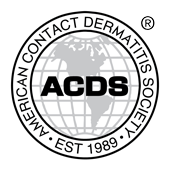Editor-in-Chief Message
April 9, 2024
On March 8, 2024, the Editorial Board of Dermatitis convened its annual board meeting. This was a hybrid live and virtual meeting (via Zoom). We thank our editorial board members, ACDS representatives and our publishing partners at Mary Anne Liebert for their participation in this very productive meeting. This update will highlight some significant developments that arose during this important meeting that will affect upcoming issues of Dermatitis.
 New Features in Dermatitis
New Features in Dermatitis
Our newest domain of interest of the journal is Environmental Dermatitis. This sphere of interest was added to the journal in 2022, and the submissions in this category of interest are gradually increasing. Because of the great success of Allergen of the Year in focusing the attention on specific allergens, the editorial board discussed a new initiative: “Environmental Toxin of the Year”. The idea here is to focus attention on how environmental change, such as climate change, specific pollutants, toxins, and environmental allergens can interact with both healthy and diseased skin across the five domains of interest of our journal. Thus, the “Environmental Toxin of the Year”, will be a mid-year initiative that will become a regular part of the journal. The authors will be recruited experts who will author a state-of-the-art manuscript related to the Environmental Toxin of the Year. This would be separate from the annual Allergen of the Year, which is typically published in the January/February issue of Dermatitis. The proposal was discussed and confirmed by the editorial board. Dr. Paul Bigliardi will take the lead on this initiative. We anticipate rolling out this new feature late in 2024, or at the latest mid-year 2025.
We discussed introducing a new article type tentatively named "Practical Advice" or "Ask the Expert". Dr. Amber Atwater graciously agreed to lead this initiative. This article type aims to offer practical guidance and insights on various dermatological procedures such as skin prick testing, photo-patch testing, intradermal challenges for injectable allergens and novel developments and methods in patch testing. Thus, this new feature will enhance the Journal's utility for both clinicians and researchers. We will be issuing a “Call for Submissions” soon.
Additionally, there will be an upcoming Special Issue focusing on Diversity, Equity and Inclusion, including ‘Skin of Color’. This special issue could potentially reoccur annually, providing a platform to highlight important research and clinical insights related to this under-served area of dermatology as relates to our five domains of interest (Contact, Atopic, Occupational, Drug, Environmental). Many thanks to Deputy Editor Dr. Marjorie Montanez-Wiscovich, who will lead this effort, collaborating with other members of the ACDS committee dedicated to Diversity, Equity and Inclusion. We will be issuing a “Call for Submissions” for articles to be included in this special issue focusing on Diversity, Equity and Inclusion.
A Reminder to Take Advantage of Opportunities for Continuing Medical Education Credit Offered by Dermatitis
In an era when documentation of Continuing Medical Education (CME) has become critical for supporting applications for state medical licensing, as well as credentialling for staff privileges at regional or University Hospitals, opportunities for CME are critical. With the assistance of our publishers at Mary Ann Liebert, Dermatitis has identified a sponsor for CME credit (University of California Irvine) for taking the self-assessment quiz that is published monthly in our journal. The self-assessment quiz may be accessed on the journal website.
All members of the ACDS are encouraged to take advantage of this new feature of the journal. Up to 6 hours of Category 1 CME can be obtained per year. This represents one hour of Category 1 CME for each quiz associated with each of the six regular issues that are published annually. The same CME quiz will be associated with any themed, “Bonus Issues” published by Dermatitis.
We have been monitoring the use of the self-assessment quiz for CME by our membership, and very few ACDS members have taken advantage of this feature since its initiation this summer. We encourage our membership to utilize this feature to test your knowledge and support your continuing medical education.
Another opportunity for CME is our ‘reviewer rewards’ program. We offer 1 hour of category 1 CME credit for each initial manuscript critique of either a study or review article (up to 5 hours of category 1 CME credit per year). This feature is now operational. When a potential reviewer accepts the task of reviewing an initial submission of a study or review article for Dermatitis, he/she will be asked if they are interested in receiving CME credit for the applicable review. If the reviewer then indicates “Yes”, he/she will be eligible for CME credit. After the completed review is received, the Associate, Deputy Editor or Editor-in-Chief will score the review for its quality and timeliness. Reviews that score at least a 70 out of 100, will receive 1 hour of CME credit, and receive an email with a link that will pose questions about the learning points related to the manuscript review. After this is completed, a certificate indicating 1 hour of category 1 CME will be issued. We encourage our reviewers to take advantage of this feature.
Membership Survey
The ACDS has recently distributed a membership survey via email related to opinions about Dermatitis, its features and whether it meets the needs of our membership. Responses are slowly arriving. We encourage our membership to complete this survey, as this feedback is critical for shaping the features of the journal. We will be sharing the results of this membership survey in our next newsletter.
Anthony Gaspari, MD
Dermatitis Editor-in-Chief
Now published by Mary Ann Liebert, Inc. and led by Anthony Gaspari, MD, Dermatitis® is the leading peer-reviewed scientific journal in contact dermatitis, and the only journal in its field that publishes leading research in atopic, contact, occupational, environmental, and drug dermatitis.
The journal is an essential resource for dermatologists, allergists, immunologists, and toxicologists and is now available only from Mary Ann Liebert, Inc. - make sure you and your colleagues don't miss an issue!
Click here to request access from your institutional library now!

